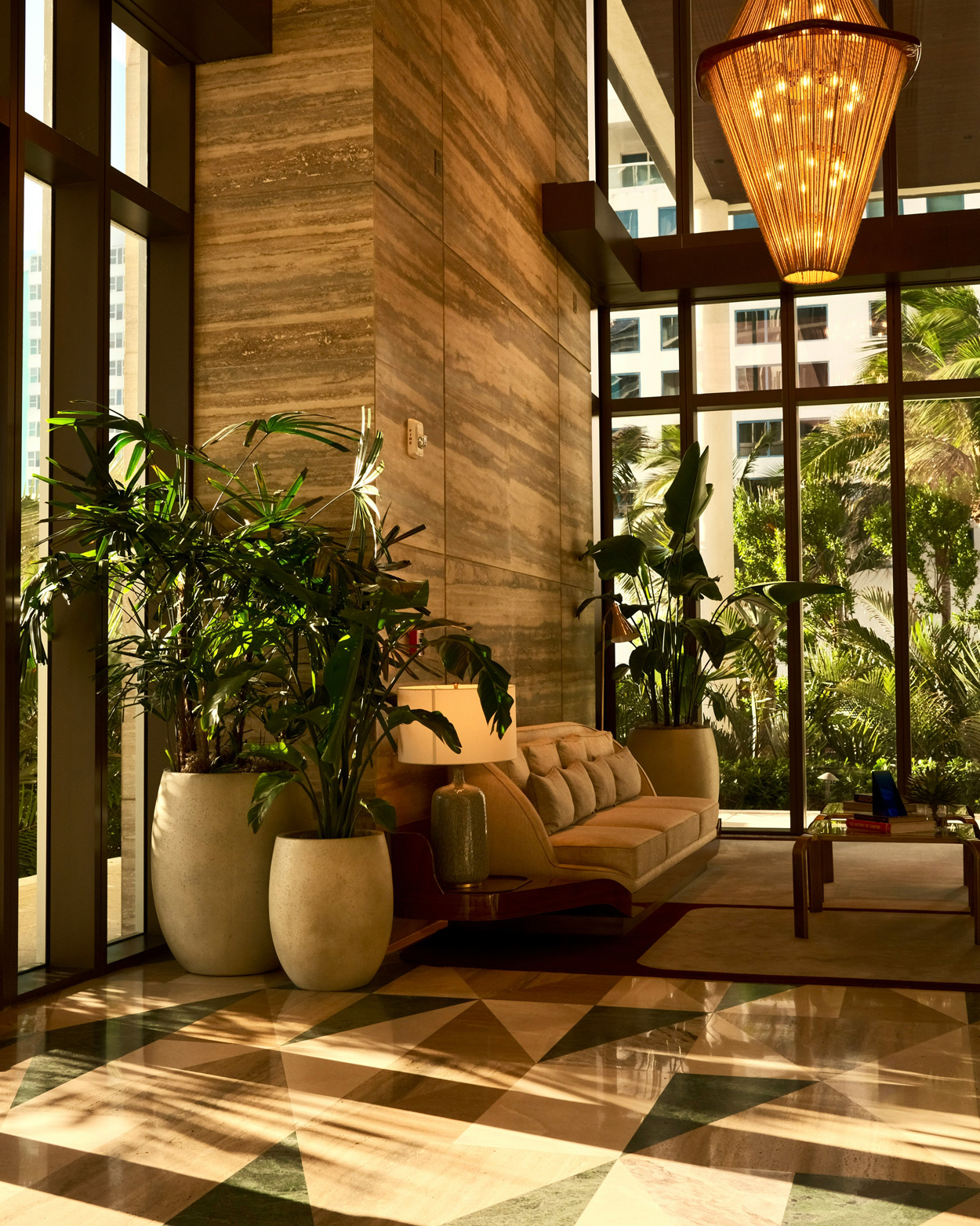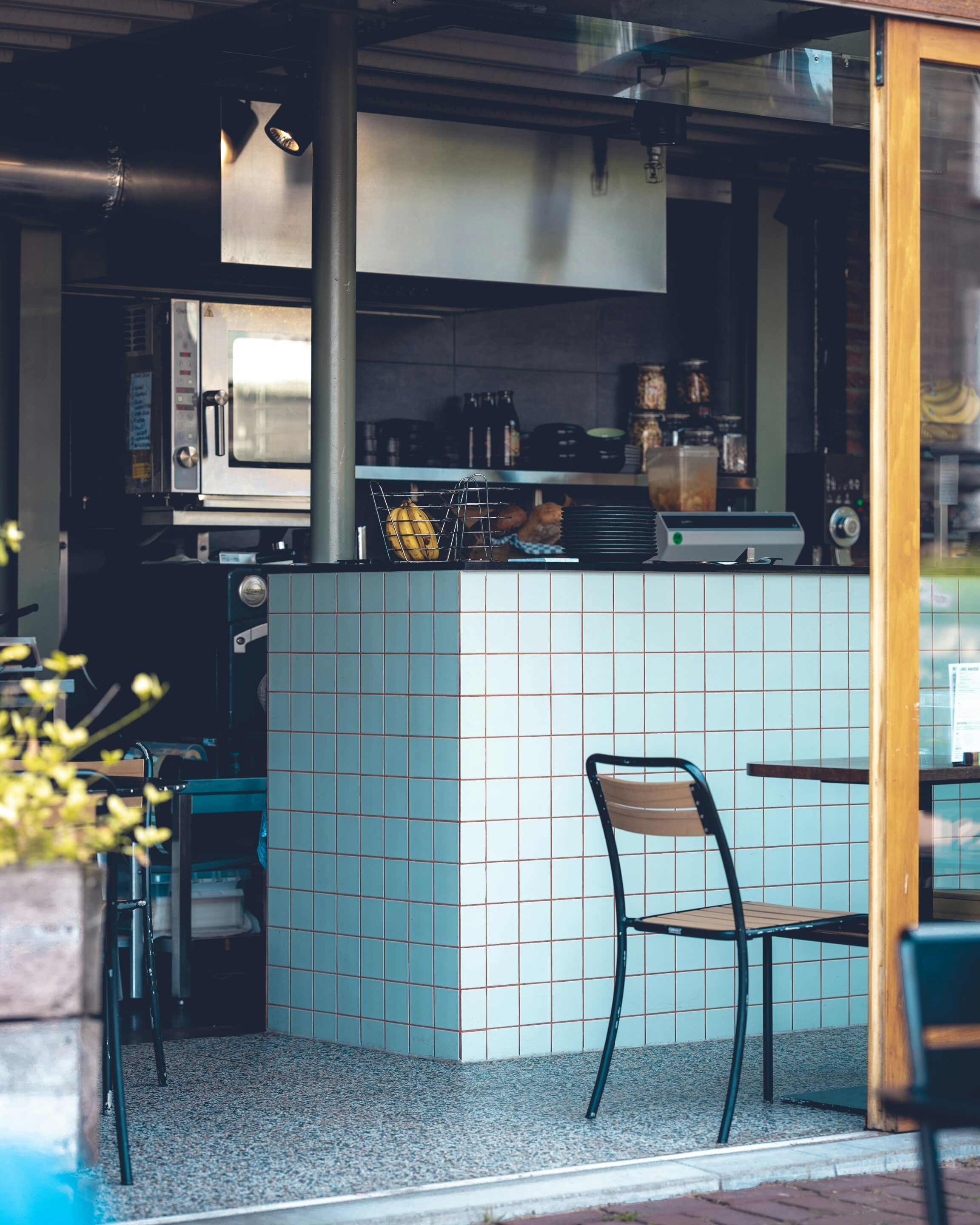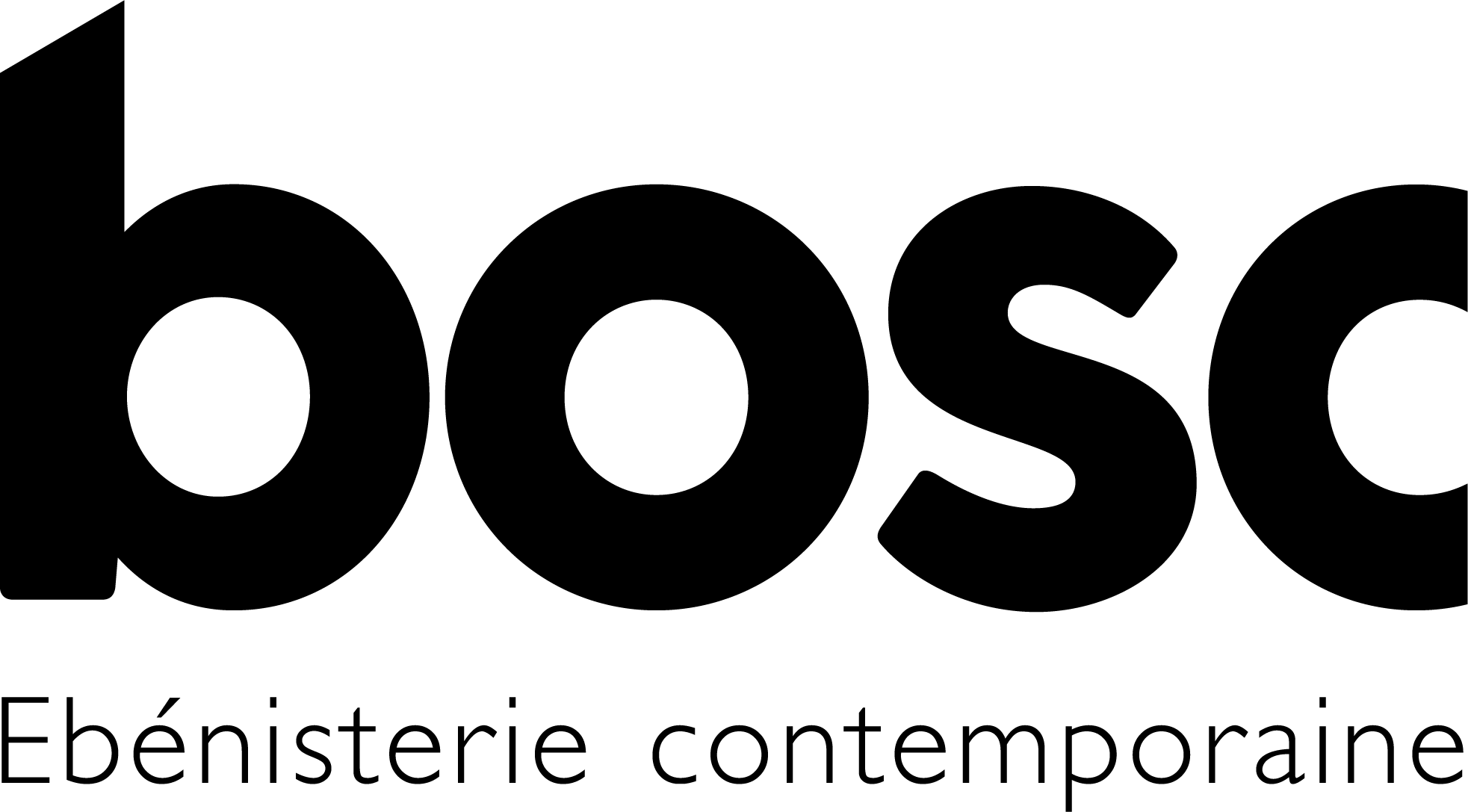The chicken or the egg: who dictates the aesthetic codes of the hospitality industry?
In the hushed lobby of a Parisian palace, the same shepherd’s chairs invariably rub shoulders with the same veined marble. A few kilometers away, in a restaurant populated by young freelance graphic designers from the 11th arrondissement sipping a café grand cru with oat milk, we find the same industrial aesthetic: exposed brickwork, ceramic counters, pendant lights with exposed bulbs, vegetable crates as tables and those unavoidable colored metal chairs (or their copies) that seem to have colonized half of the capital’s establishments. This disturbing uniformity raises a fascinating question: are we faced with a lack of imagination on the part of designers, or with the discreet but implacable tyranny of public expectations?


The comfort of recognition
Step into a Hilton in Tokyo, London or São Paulo. The experience is disturbingly familiar. The visual codes are repeated with surgical precision: neutral tones, sleek furniture, subdued lighting. This standardization is no accident. It responds to a deep psychological need of the traveler: that of immediate recognition, of a landmark in the unknown. “When I walk through the door of a 4-star hotel, I have very specific expectations”, confides Marie, a senior executive who has just arrived at the hotel.confides Marie, an executive who travels 150 days a year.
“I want a certain level of service, but also an atmosphere that I can decode instantly. Originality is great for vacations, less so for business trips.” This demand for predictability has a profound influence on the choices made by interior designers. They navigate between the desire to create and the need to reassure, between innovation and profitability. For behind every aesthetic choice lies an implacable economic reality: an establishment that confuses its clientele risks seeing its occupancy rates plummet.

Designers, prisoners of conformism
An interior designer specializing in luxury hotels makes no secret of her frustration: “We’re asked for something – different but not too different. Hotel managers want to stand out from the competition while maintaining reassuring codes. It’s a constant balancing act. This creative tension is particularly evident in furniture. Designers compete in ingenuity to offer subtle variations on tried-and-tested themes.
The result is a line-up of armchairs and chairs that bear an uncanny resemblance to design classics, tables that evoke great signatures, and lighting fixtures that flirt with audacity without ever crossing the red line of disturbing originality. The phenomenon is amplified by the emergence of social networks. Establishments must now be “Instagrammable”, offering settings that are sufficiently photogenic to generate viral content. This new constraint pushes towards an aesthetic calibrated for the screen, favoring immediate visual impact over subtlety or innovation.

When the public becomes prescribers
But would it be fair to accuse only the professionals of timidity? An analysis of consumer behavior reveals a more nuanced reality. Despite their declarations of intent in favor of originality, customers overwhelmingly vote with their feet for conformity. Online booking platforms reinforce this trend. Recommendation algorithms favor establishments with consensual visuals, those that correspond to the most frequent searches.
A hotel with a design that’s too avant-garde risks disappearing into the depths of search results, invisible to the general public. International clientele further amplifies this phenomenon. To appeal to a global market, aesthetic codes must transcend cultures, which naturally pushes towards a lower visual common denominator. The resulting “international” style, while facilitating global brand recognition, helps to erase local and cultural specificities.

The little-known influence of economics
Behind these aesthetic choices lie economic realities that the public rarely perceives. The cost of replacing furniture, ease of maintenance, resistance to wear and tear: these are all constraints that steer decisions towards tried-and-tested solutions rather than experimentation. Suppliers specializing in the hospitality industry naturally offer ranges adapted to these constraints, creating a standardized offering which in turn influences the choices made by specifiers. This economic loop helps perpetuate standardization, even when the creative will exists.
Islands of creative resistance
Yet counter-examples do exist and are thriving. Establishments such as Mama Shelter in Paris and Design Hotels around the world prove that there is a clientele for bold aesthetics. These establishments deliberately cultivate difference, accepting that they are addressing a niche rather than the mass market. Some designers also manage to bypass constraints by working on seemingly innocuous details.
A sculpted door handle, an unexpected wall covering, a subtle lighting scheme, an armchair with surprising curves, a chair with subtle details, freed from the tics and tocs of post-fifties mimicry. These micro-innovations and this attachment to uniqueness help to create a strong identity without upsetting established codes. The restaurant business sometimes offers more latitude than the hotel business. A restaurant can indulge in audacities that a hotel would not, because the customer’s commitment is less onerous and more punctual. That’s how some of the new trends are born, and after proving themselves in the restaurant business, they migrate to the hotel world.
Towards a possible reconciliation?
The question of who influences whom could well be badly posed. Rather than a balance of power between creators and the public, we may be witnessing a co-construction of aesthetic codes, where each party influences the other in a perpetual movement. The new generations of travelers, more sensitive to authenticity and experience than to pure comfort, could redistribute the cards. The emergence of the experience economy is prompting certain establishments to take more creative risks, even if this means displeasing some of their traditional clientele.
At the same time, a new generation of designers, trained in a globalized world but sensitive to local identity issues, is developing more subtle approaches. They succeed in reconciling universality and specificity, psychological comfort and aesthetic surprise. The future of design in the hospitality industry will probably lie in this ability to overcome the sterile opposition between conformity and originality. For perhaps the real revolution lies not in rejecting established codes, but in transcending them with sufficient intelligence that inventiveness itself becomes a new comfort.

